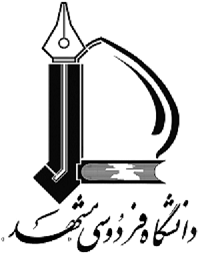|
دبير علمي همايش
دکتر سيدامير امين يزدي
دبير اجرايي همايش
دکتر مجتبي کفاشان کاخکي
پيوند هاي مفيد
|
 |  | |
English Abstract Template TITLE (TIMES
NEW ROMAN, 24 FONT SIZE, BOLD, ALL CAPS, CENTERED) Author’s Name and
Surname1, Author’s Name and Surname2 (12 font size) 1Affiliation E-mail Abstract:
Abstract should be written with 10 font size, Times New Roman,
single line spacing. Summarize in this section objective, method and findings. Keywords: This
section should contain maximum 5 words separated by commas. GENERAL GUIDELINES The extended abstract
must contain the following sections: abstract and keywords, introduction,
methodology, findings, conclusion, and references. Section can be named
differently and subsections can be included. The extended abstract
shall be written in font Time New Roman, single line spacing and 11 font
size. The extended abstract should contain a minimum of 1000 words and a
maximum of 2500 words. Extended abstracts can contain figures, tables and/or
images which are not included in the word count. The references are not included
in the word count as well. Page format should be A4 page size with margins 2.5
cm wide from the right, left, top and bottom. Pages should not be numbered. INTRODUCTION (Times New Roman, 16 font
size, bold, all caps) The introduction
section should (1) present the scope and objective of the paper and state the
problem, (2) briefly review the pertinent literature, (3) describe the methods,
and (4) provide an overview of the main results of the work. METHODOLOGY The methodology must be
clearly stated and described in sufficient detail or with sufficient
references. The author shall explain the research question, describe the
research framework, and the methods applied in detail. It should be furthermore
highlighted why the research question is relevant to theory and practice, and
why the chosen method(s) are suited for the problem. FINDINGS The arguments and
findings are described in detail in this section. CONCLUSIONS Conclusions should include (1) the principles and generalizations
inferred from the results, (2) any exceptions, problems or limitations of the
work, (3) theoretical and/or practical implications of the work, and (5)
conclusions drawn and recommendations. | ||
 |  |
|
تاريخ هاي مهم
ارسال چکيده مبسوط: (حداکثر 450 واژه) 30 آذر 1397 اعلام نتايج داوري نهايي: 13 بهمن 1397 زمان برگزاري همايش: 11 و 12 اسفند1397
برگزارکنندگان
ورود به سيستم
بازديدکنندگان سايت
تعداد کل بازدید: 71313 تعداد کاربران آنلاین: 1 تعداد بازدید امسال: 3305 تعداد بازدید این ماه: 354 تعداد بازدید امروز: 27 |



